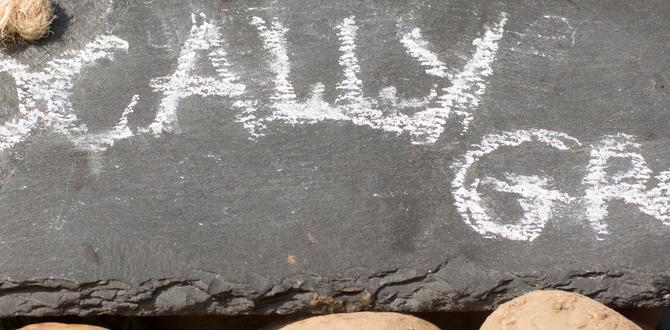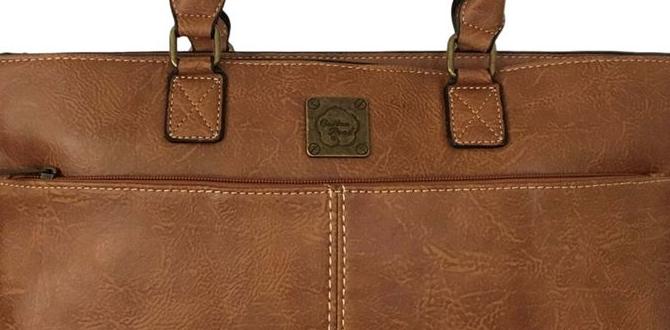Discover the Atacama Desert’s hidden gems by venturing beyond the usual tourist spots to find lesser-known geological wonders, unique cultural experiences, and unparalleled stargazing opportunities, transforming your trip into an unforgettable adventure.
The Atacama Desert. Just the name conjures images of vast, empty landscapes, salty plains, and otherworldly rock formations. While the famous geysers and lagoons are breathtaking, there’s so much more to explore in this incredible corner of Chile. Many travelers stick to the well-trodden paths, missing out on truly special experiences.
But what if you could uncover the secrets that lie just off the beaten track? This guide is here to help you plan a trip filled with unique discoveries, ensuring your journey is as comfortable and stress-free as possible. We’ll walk you through finding those “hidden gems” that make the Atacama Desert an even more magical place.
Unearthing the Atacama: Why Look Beyond the Obvious?
It’s easy to see why places like the El Tatio Geysers or the Valle de la Luna (Moon Valley) are so popular. They’re undeniably spectacular! But the Atacama is immense, stretching for thousands of kilometers, and its true magic often lies in the quieter, less-visited corners. Finding these spots isn’t about being an expert explorer; it’s about knowing where to look and what to expect. By veering slightly from the most common itineraries, you unlock more profound connections with the landscape, its history, and its astonishing biodiversity.
Think of it like packing for a trip. You need the essentials, of course. But adding a few thoughtful extras – like comfortable travel gear or even discreet personal care items for unexpected needs – can elevate the entire experience from good to truly exceptional. This same principle applies to discovering the Atacama’s hidden gems. They enhance your adventure, offering moments of solitude, genuine surprise, and deeper understanding.
Your Secret Atacama Itinerary: Beyond the Crowds
Ready to dive into the less-explored side of the Atacama? Here are some essential discoveries that promise awe without the crowds. We’ll focus on unique geological marvels, surprisingly vibrant ecosystems, and cultural encounters that will stay with you long after you leave.
1. The Valle de los Géiseres de Puchuldiza: A Quieter Geothermal Wonder
While El Tatio is the star geyser field, the Puchuldiza Geysers offer a more intimate geothermal experience. Located in the highlands, this area features more than 80 active fumaroles and geysers that erupt throughout the day. In the early morning, the steam rising from the colorful ground against the backdrop of snow-capped volcanoes is simply mesmerizing. It’s often less crowded than its famous counterpart, allowing for a more serene and personal encounter with the Earth’s raw power.
Getting There: Access typically requires a sturdy 4×4 vehicle and can be part of guided tours from Iquique or as a detour from routes coming from or going to San Pedro de Atacama.
Best Time to Visit: Early morning, similar to El Tatio, for the most dramatic steam displays.
What to Bring: Warm clothing (it’s at high altitude!), sturdy walking shoes, and plenty of water.
2. Quebrada de Guatacondo: A Canyon of Ancient Petroglyphs
Venture into the rugged beauty of the Quebrada de Guatacondo, a fascinating canyon system near the border with Argentina. This area is a revelation for history enthusiasts, boasting an incredible collection of pre-Columbian petroglyphs and ancient village ruins. Walking through this remote canyon feels like stepping back in time, with rock carvings depicting animals, human figures, and geometric patterns etched into the canyon walls by ancient peoples who once thrived in this arid land.
Why it’s a Gem: Offers a tangible connection to the Atacama’s deep human history, often with no other visitors around.
Exploration Tips: Best explored with a knowledgeable local guide who can interpret the petroglyphs and point out archaeological sites. Be prepared for uneven terrain and desert conditions.
Learn More: For those interested in the archaeological significance of arid regions, resources from institutions like the National Park Service’s Archaeology Program can offer broader context on the preservation and study of ancient sites.
3. Salar de Surire: An Undisturbed Salt Flat Sanctuary
While the Salar de Atacama is vast and famous for its salt extraction, the Salar de Surire offers a pristine and less commercialized salt flat experience. This protected natural monument is a vital habitat for Andean flamingos, vicuñas, and other high-altitude wildlife. The vibrant colors of the mineral-rich waters, the endless expanse of white salt, and the abundant wildlife make it a photographer’s paradise and a haven for nature lovers seeking solitude.
Wildlife Spotting: Keep an eye out for the three species of Andean flamingos!
Environmental Considerations: The area is remote and protected. Follow Leave No Trace principles strictly to preserve its delicate ecosystem.
Logistics: Access is challenging and usually requires a multi-day tour from Arica or Putre, often including stays in basic refuges.
4. Termas de Puritama: Natural Hot Springs Oasis
Forget the crowded thermal baths. The Termas de Puritama offer a series of natural, geothermally heated pools cascading down a canyon. Tucked away in a beautiful gorge, these warm waters are a perfect place to relax and soak in the stunning desert scenery. The contrast between the warm water and the cool desert air is invigorating. It’s a far more natural and serene experience than many developed hot springs.
Relaxation Defined: The therapeutic waters and tranquil environment are ideal for unwinding.
Amenities: While natural, there are basic facilities like changing rooms and pathways for comfortable access.
Pro-Tip: Visit early in the morning or late in the afternoon to avoid peak times and enjoy the pools more privately.
5. Piedras Rojas (and Salar de Talar): A Symphony of Color
While often visited as part of a larger tour, the area around Piedras Rojas (Red Rocks) and Salar de Talar is a hidden gem in its own right, especially if you take the time to explore its nuances. The striking red volcanic rocks juxtaposed against the brilliant blue of the Salar de Talar lagoon, often fringed with white salt deposits, creates a landscape of unbelievable color. This high-altitude salt flat is less visited than others, offering a more untouched and visually dramatic scene.
Visual Feast: The intense colors are unforgettable, providing incredible photography opportunities.
Altitude Awareness: This area is at a very high altitude (over 4,000 meters), so acclimatization is crucial. Drink lots of water and avoid strenuous activity.
Location: Usually accessed via tours from San Pedro de Atacama, heading towards the Andes.
6. The Altiplanic Lagoons: Laguna Miscanti & Miñiques – A High-Altitude Dream
While widely known, the Laguna Miscanti and Miñiques within the Los Flamencos National Reserve retain an air of untouched splendor due to their remote, high-altitude location. These twin lagoons, nestled beneath towering volcanoes, boast incredibly vibrant turquoise and sapphire waters. The crisp air, the dramatic mountain backdrop, and the chance to spot vicuñas and flamingos make them a must-see, offering a serene beauty that feels truly special.
Wildlife Haven: Often used by the local flamingo populations.
Photography: The reflections of the sky and volcanoes on the water are breathtaking.
Visitor Information: Entrance fees help support the conservation of this stunning area. For more about national reserves and their importance, you can consult resources from the official Chilean tourism site or national park services.
Planning Your Atacama Adventure: Practical Essentials
Exploring the Atacama, especially its hidden gems, requires careful planning. Comfort and preparedness are key to enjoying these remote and stunning locations. Think of it like packing everyday essentials, but with a desert twist!
What to Pack for Comfort and Confidence
When venturing into the desert, especially to higher altitudes, packing smart makes all the difference. Here are some must-haves to ensure your comfort, whether you’re exploring ancient petroglyphs or soaking in hot springs.
| Item Category | Essential Gear | Why It’s Important |
| Clothing | Layers (thermal base, fleece, windproof outer shell) | Temperatures can swing dramatically between day and night, and with altitude changes. Layers allow you to adapt easily. |
| | Sun hat with wide brim | Essential for protection against intense UV rays at high altitudes. |
| | Sunglasses | Crucial to protect your eyes from glare, especially on salt flats and sandy areas. |
| | Comfortable, sturdy walking shoes/hiking boots | You’ll be traversing uneven terrain. Good ankle support and grip are vital. |
| | Warm socks | Cold feet can make any adventure miserable, especially at night or in higher altitudes. |
| Health & Safety | High SPF sunscreen (SPF 50+) | The sun at Atacama’s altitude is exceptionally strong. |
| | Lip balm with SPF | Prevents chapped lips from sun and dry air. |
| | Reusable water bottle | Staying hydrated is paramount in the desert. Many tours offer water refills. |
| | Basic first-aid kit | Include bandages, antiseptic wipes, pain relievers, and any personal medications. |
| | Medications for altitude sickness (optional, consult doctor) | If you’re prone to altitude sickness, consult your doctor about preventative measures. |
| Accessories | Backpack (day pack) | To carry water, snacks, sunscreen, a camera, and extra layers during day trips. |
| | Camera and extra batteries/power bank | You’ll want to capture the incredible landscapes! Desert air can drain batteries faster. |
| | Headlamp or flashlight | Useful for early morning or late evening excursions, especially if stargazing. |
| Personal Comfort| Travel-size toiletries | Keep it light and practical. |
| | Consider discreet personal care items (e.g., adult diapers, protective underwear) | For long travel days, remote excursions, or unexpected needs, having reliable personal care items can provide significant peace of mind and comfort, allowing you to focus on the adventure. |
Getting Around: Logistics for Hidden Gems
Reaching the Atacama’s hidden gems often requires more than just a standard rental car.
4×4 Vehicles: Many remote locations, like the Puchuldiza Geysers or certain tracks in Guatacondo, absolutely require a 4×4. If you’re not an experienced off-road driver, it’s best to hire a vehicle with a local driver or join a guided tour.
Guided Tours: The easiest and often safest way to access many hidden gems is through specialized tours. Local operators know the terrain, have the right vehicles, and can provide invaluable insights. Look for smaller group tours for a more intimate experience.
Distances: The Atacama is vast. Distances between attractions can be significant, and travel times on unpaved roads can be slow. Factor this into your itinerary.
San Pedro de Atacama: This town serves as the primary hub for most tourist activities. While it’s bustling, it’s the best place to arrange tours and gather information. However, remember that the real hidden gems lie beyond San Pedro itself.
Altitude and Acclimatization: Your Health Matters
Many of the most spectacular hidden gems in the Atacama are located at high altitudes (3,000-5,000 meters or 9,800-16,400 feet). Proper acclimatization is crucial for a safe and enjoyable trip.
Arrive Slowly: If possible, spend your first day or two in San Pedro de Atacama (around 2,400 meters) before venturing to higher elevations.
Stay Hydrated: Drink plenty of water, even if you don’t feel thirsty. Avoid alcohol and caffeine, as they can dehydrate you.
Gentle Activity: On your first day at high altitude, take it easy. Avoid strenuous hikes or activities.
Listen to Your Body: Symptoms of altitude sickness can include headaches, nausea, dizziness, and fatigue. If you experience these, descend to a lower altitude if possible and rest. Consulting your doctor about altitude sickness medication is also a wise step.
Beyond the Landscape: Cultural & Astrological Gems
The Atacama isn’t just about rocks and water. It holds deep cultural significance and offers an unparalleled window to the cosmos.
1. Indigenous Heritage and Petroglyphs
As mentioned with Quebrada de Guatacondo, the Atacama has been inhabited for millennia. Across the region, you can find evidence of ancient cultures, from burial sites to rock art. Visiting these locations offers a profound connection to the people who have adapted to and thrived in this challenging environment for thousands of years. Always treat these sites with respect, as they are invaluable historical and cultural assets.
2. Stargazing: A Universe Unveiled
While not exactly “hidden,” the stargazing in the Atacama is so extraordinary that it merits a special mention. The extremely dry air, high altitude, and minimal light pollution create some of the clearest skies on Earth.
Official Observatories: Places like the Paranal Observatory (home to the Very Large Telescope) and the ALMA Observatory offer guided tours, though these often need to be booked far in advance.
Astrophysical Tourism: Many companies offer stargazing tours from San Pedro de Atacama, providing telescopes, expert guides, and explanations of constellations, planets, and nebulae. Even without a formal tour, stepping outside on a clear night will reveal a celestial spectacle unlike any other.
Making Your Atacama Trip Comfortable: Practical Travel Solutions
When you’re exploring remote and rugged landscapes, comfort and preparedness are not luxuries – they are essential for enjoyment and safety. As the voice behind Journey Essentials, I always emphasize solutions that make travel smoother.
The Importance of Reliable Personal Care
For travelers, including those managing personal health needs, having dependable products can make a significant difference. Long days of travel, early morning excursions to geysers, or unexpected delays can be stressful. Having access to discreet and comfortable personal care items, such as adult diapers or protective underwear, ensures you can focus on the adventure without worry.
These items are designed for comfort, absorbency, and discretion, allowing for greater freedom and confidence, whether you’re on a bumpy 4×4 ride or enjoying a long, scenic drive. Knowing you’re prepared for any situation lets you embrace the journey fully.
Luggage and Gear for the Desert
Choosing the right luggage is also part of the preparation. A sturdy, well-organized travel backpack for your main luggage and a smaller, comfortable daypack for excursions are ideal. Look for quick-drying fabrics and ample pockets for easy access to essentials like sunscreen, water bottles, and snacks.
Frequently Asked Questions
How do I find these “hidden gems”?
Hidden gems are often found by looking slightly off the main tourist routes. This can involve joining specialized tours that go to less-visited areas, hiring a local guide who knows the region intimately, or doing thorough research on less popular destinations within national reserves or remote canyons. It’s about searching for natural attractions and cultural sites that aren’t in every standard guidebook.
Are the hidden gems accessible for beginners?
Accessibility varies. Some gems, like Termas de Puritama, have well-maintained paths. Others, like certain petroglyph sites or remote geyser fields, might require 4×4 vehicles and uneven terrain. For beginners, it’s highly recommended to use guided tours for the more challenging locations to ensure safety and ease of access. Always check the tour operator’s details and group size.
What is the best time of year to visit the Atacama?
The Atacama Desert has a favorable climate year-round due to its aridity. However, the shoulder seasons (March-May and September-November) often offer pleasant temperatures for exploring and fewer crowds. Winter (June-August) can be very cold, especially at high altitudes, but offers exceptionally clear skies for stargazing. Summer (December-February) can be hotter, and this is also the season for occasional coastal fog (camanchaca) in some areas.
Do I need a 4×4 to see these places?
For many of the truly “hidden” spots, yes, a 4×4 vehicle is highly recommended or even necessary due to rough, unpaved roads and challenging terrain. If you are not an experienced off-road driver, we strongly advise booking tours with operators who use appropriate vehicles and knowledgeable drivers. This ensures your safety and protects your rental vehicle.





